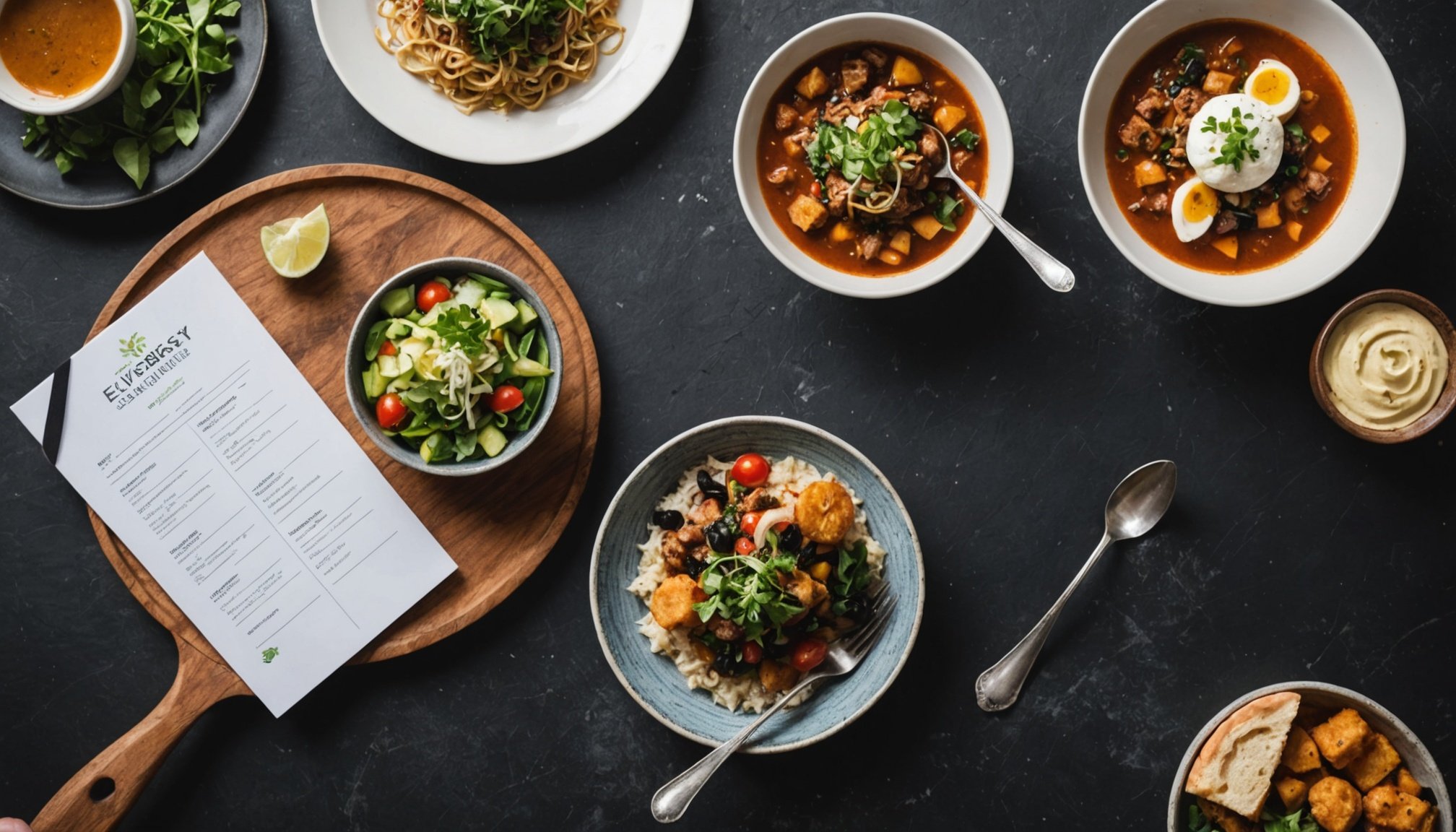Understanding Data Insights in Culinary Context
Navigating the bustling culinary landscape requires adept utilization of data insights. Through culinary analytics, chefs and restaurateurs can delve into what truly captivates their diners. This involves the study of customer preferences, purchase patterns, and an ever-evolving gamut of dining trends. Recognizing these key patterns empowers establishments to engage in menu optimization that not only attracts but also retains clientele.
Case studies abound where data insights have successfully influenced menu strategies. By dissecting purchasing behaviors, restaurants have fine-tuned their offerings, yielding increased customer satisfaction and profitability. For instance, an establishment might pinpoint top-selling dishes and creatively enhance them or forecast new trends to preemptively tailor their menus.
In the same genre : Top commercial interior design trends to watch in 2025
Furthermore, data insights provide a direct line to understanding customer trends. As preferences shift, sometimes with the seasons or influenced by broader cultural transitions, eateries can remain agile and relevant. Aligning menus with these trends not only satisfies existing customers but also has the potential to captivate new ones.
In essence, embracing culinary analytics and menu optimization fosters a dynamic and responsive dining experience. This data-driven approach is critical for any establishment aiming to thrive in today’s fast-paced gastronomic environment.
This might interest you : Revamping Glasgow’s Culinary Scene: Harnessing Data Analytics for Custom-Made Menus
The Role of Consumer Behavior Analysis
Consumer behavior profoundly impacts how restaurants design their menus. By examining dining preferences, establishments can tailor their offerings to enhance customer satisfaction. Understanding what influences diners helps chefs formulate dishes that resonate with patrons’ tastes.
Techniques for Analyzing Customer Preferences
Effective analysis begins with collecting feedback. Restaurants can employ surveys and direct interaction to gather valuable insights. Analyzing sales data provides another perspective, highlighting popular menu items. Observing seasonal trends also guides decisions; many diners prefer light fares in summer and hearty meals in winter.
Implementing Feedback Loops
Creating robust feedback systems allows for continued engagement with customers. A method to achieve this is through trust and relationship building, offering patrons a stake in culinary offerings. Adjustments based on real-time insights ensure ongoing relevance.
The Significance of Cultural Trends
Cultural shifts often dictate dining choices. In cities like Bristol, leveraging local ingredients enhances menu relevance. Aligning with new trends such as sustainable eating or ethnic cuisine expansions keeps menus fresh. Restaurants adept in marrying cultural shifts with dining preferences often find themselves with satisfied and loyal clientele.
Data Analysis Techniques for Menu Development
Integrating data analysis techniques into menu design is an evolving practice in the food service industry. Predictive analytics enhances decision-making, enabling restaurants to anticipate trends and tailor offerings accordingly. By understanding key performance indicators, such as dish popularity and profitability, establishments can continuously hone their menu offerings to maximize success.
Below are some strategies to apply these techniques:
-
Key Performance Indicators (KPIs): Monitor metrics like sales volume, customer feedback, and order frequency to assess menu performance. This data pinpoints which items resonate with diners and aids in identifying underperforming dishes.
-
Predictive Analytics: By using models that predict customer preferences, restaurants can forecast which new dishes might become hits. These insights facilitate proactive adjustments, ensuring the menu remains contemporary and appealing.
-
Tools and Software: Utilize tools like BI software and database systems to gather comprehensive data insights. This facilitates a holistic approach to menu management, allowing for data-driven adaptations and improved culinary offerings.
Ultimately, employing data analysis in menu design not only promotes agility and relevance but also empowers culinary teams to maintain an edge in the competitive gastronomic landscape.
Understanding Data Insights in Culinary Context
Data insights play a crucial role in the modern culinary industry. By leveraging culinary analytics, restaurants can fine-tune their menus to align with customer expectations. These insights allow establishments to understand and adapt to shifting customer preferences, enhancing the overall dining experience.
Several case studies highlight the power of menu optimization through data. Restaurants have successfully harnessed data to identify popular dishes and trend shifts, enabling them to refine their offerings proactively. For instance, analytics might reveal a rising demand for plant-based options, prompting chefs to introduce new vegan dishes. This strategy not only meets current demands but also anticipates future trends, keeping the menu fresh and relevant.
Furthermore, data insights provide a window into understanding customer preferences and trends. By analysing purchasing patterns and feedback, restaurants can predict which dishes will resonate with their audience. This knowledge informs decisions on menu updates, ensuring customer satisfaction and enhancing loyalty. As the culinary landscape evolves, embracing data-driven decisions is essential for staying competitive. Establishments that successfully implement these strategies can expect to see increased engagement and profitability, securing their position in the fast-paced gastronomic world.
Measuring Success and Adjusting Strategies
Performance measurement is essential for any restaurant looking to refine its menu continually. Key metrics, such as sales performance, customer satisfaction scores, and feedback frequency, provide insights into which dishes are thriving and which might need reevaluation.
Understanding these customer insights allows establishments to make informed decisions about their offerings. For instance, if sales data reveal that certain items consistently underperform, chefs can either revamp the recipe or consider removing the dish altogether. This continuous feedback loop ensures menus remain relevant and appealing.
Tools for monitoring customer reactions, like CRM systems and customer surveys, are invaluable. They offer real-time data that helps in adjusting strategies promptly. By actively engaging with these insights, chefs can remain agile and responsive to shifting preferences, thus maintaining high levels of customer satisfaction.
Regularly reviewing the menu based on systematic analysis not only fosters continuous improvement but also builds stronger relationships with patrons. This strategic approach not only enhances culinary offerings but also fortifies a restaurant’s competitive edge in the fast-evolving gastronomic landscape.











